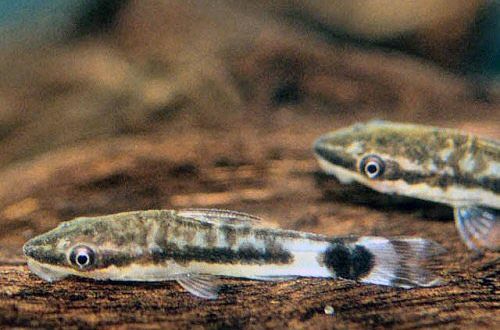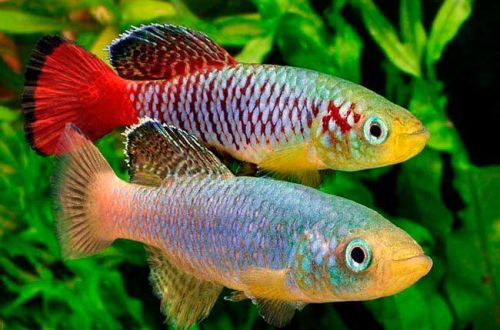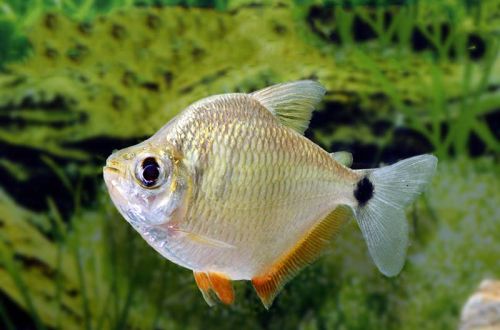
Somik Otto
Otocinclus macrospilus or Catfish Oto, scientific name Otocinclus macrospilus, belongs to the family Loricariidae (Mail catfish). Close relatives of Otocinclus are Affinis and Zebra otocinclus. These catfish serve as an excellent means of combating algae. It is for this that they are valued and purchased in home aquariums.

Contents
Habitat
It comes from South America from the upper Amazon basin, inhabits the Napo and Marañon river systems, flowing through the territory of Ecuador, Peru (Department of Loreto) and Colombia. Inhabits areas of rivers with dense aquatic vegetation, as well as the so-called “floating meadows” – large clusters of plants that form something like islands, drifting downstream.
Brief information:
- The volume of the aquarium – from 40 liters.
- Temperature – 21-26°C
- Value pH — 5.5–7.5
- Water hardness – 1–12 dGH
- Substrate type – any
- Lighting – any
- Brackish water – no
- Water movement – little or no
- The size of the fish is up to 4 cm.
- Nutrition – plant foods, algae
- Temperament – peaceful
- Content in a group of at least 5–6 individuals
Description
Adult individuals reach a length of up to 4 cm. Catfish has a short body with a large head. The fins are short. The main color is gray with a white belly. Sexual dimorphism is weakly expressed, there are no obvious visible differences between males and females.
Fish have the ability to swallow air, but not to breathe, as the Cockerels and Gourami do. A breath of air increases their buoyancy, which allows them to be near the surface without much effort when they feed in “floating meadows”.
Food
In nature, the basis of the diet are algae and small invertebrates that inhabit them. In the home aquarium, the daily diet should also consist of vegetable matter. For example, you can serve fresh pieces of apples, cucumbers, blanched spinach and other green vegetables and fruits, dry spirulina flakes and similar foods. Bright lighting will encourage the natural growth of algae, an additional source of food. True, in the latter case, you can easily overdo it and algae can flood everything around. Once a week, serve frozen foods such as brine shrimp and daphnia.
Maintenance and care, arrangement of the aquarium
The optimal size of the aquarium for 5-6 fish starts from 40 liters. It is recommended to keep in an environment with a large number of broad-leaved plants, including floating ones. Large snags are also used in the design. The lower tier is not of particular importance and can be made of sand, gravel and other substrate.
Catfish Oto needs soft, slightly acidic water. Excessive accumulation of organic waste that can disrupt the nitrogen cycle should be avoided. Usually, regular maintenance of the aquarium along with the installation of a filtration system is enough to keep the conditions within acceptable limits.
Behavior and Compatibility
Peaceful and even shy species, it is desirable to maintain in a group of 5-6 individuals. As neighbors, you should select the same small fish from among the catfish corridors, apistograms, tetras and others.
Breeding / breeding
Otocinclus macrospilusi is bred in home aquaria, but the process is complicated by the fact that the stimulus for spawning is environmental changes (imitation of the rainy season) and it is necessary to ensure the growth of algae to feed the tiny fry. The first task is solved by gradually replacing part of the water with a cooler one. Thus, the temperature is lowered by 2–4 degrees and maintained at the achieved values for several days or weeks, until the mating season begins for the fish. It is worth noting that this method does not give guarantees and it is quite possible that spawning will not happen. Catfish lay their eggs on the surface of plants, the fry that appear usually do not swim far, so food should be nearby and be available all the time. The only solution is to encourage algae growth naturally by increasing light levels.
Fish diseases
The cause of most diseases is unsuitable conditions of detention. A stable habitat will be the key to successful keeping. In the event of symptoms of the disease, first of all, the quality of the water should be checked and, if deviations are found, measures should be taken to correct the situation. If symptoms persist or even worsen, medical treatment will be required. Read more about symptoms and treatments in the Aquarium Fish Diseases section.





